Though Often Unanimous, Independent Voices Emerge
The New York Law Journal by Joel Stashenko - August 25, 2008
ALBANY - The state Court of Appeals continued its trend toward agreeing to disagree more often in its 2007-08 session, a term in which the judges completed the process of invalidating all death sentences imposed under the 1995 capital punishment law. While most of the Court's rulings were unanimous, there were 29 dissents in the session between September 2007 and July 2008. That pushed the total rulings with dissenting opinions to 162 over the past five sessions of the Court. In the previous five terms, from 1998-99 to 2002-03, the judges dissented just 69 times. Legal observers and practitioners familiar with the Court agree that the unanimity it sought under former Chief Judge Sol Wachtler and during the first half of Judith S. Kaye's tenure as chief judge is long gone, having given way to a Court whose members are more intent on airing their opinions.
Brooklyn Law School Professor William E. Hellerstein said Chief Judge Kaye "doesn't like disagreements" and would prefer her Court to speak with one voice more often. "She likes people to be on the same page," Mr. Hellerstein said in an interview. "I think that hasn't happened as much as she has liked." Judge Robert S. Smith, for example, has written 37 dissents since being selected to the Court by then-Governor George Pataki in late 2003, a period in which Chief Judge Kaye has only penned nine dissenting opinions. In the last session alone, Judge Smith wrote nine dissents and joined an unsigned dissent in which Judges Smith, Susan Phillips Read and Eugene F. Pigott Jr. referred to a lower-court decision as the basis for their objection to the majority opinion. With the confirmation of Judge Read in 2003, Pataki appointees gained a majority on the Court over those appointed by then-Governor Mario Cuomo. Over her five sessions on the Court, Judge Read has written 28 dissents.
"It is clear that by the time Robert Smith got to the Court, you had a number of judges who were not part of that Kaye tradition [of unanimity] and they tend to be more ornery," said Albany Law School Professor Vincent Bonventre, who compiled the dissent figures. "If you read a Susan Read decision or a Robert Smith decision, they are a little more ornery. They are not uncivil. But they don't mind taking shots at what the Court is doing." Judge Smith, in particular, continued to keep Court observers guessing in the 2007-08 term, as he has in many of his rulings since joining the bench in early 2004. In October, he was in the 4-3 majority in People v. Taylor, 9 NY3d 129, the case in which the Court invalidated the seventh and last death sentence against a defendant under the capital punishment statute adopted in 1995. The ruling relied on stare decisis and the majority's belief that crafting a constitutional statute is the job of the Legislature, not the courts. Judge Smith joined the majority in Taylor despite having dissented from the Court's 2004 ruling in People v. LaValle, 3 NY3d 88, the case that effectively rendered the death penalty statute unconstitutional because of defects in sentencing procedures that could coerce jurors into voting for death.
But in another major criminal case in the last term, People v. Hall, 10 NY3d 303, Judge Smith sided with the police in holding that he did not believe a search warrant was necessary in order for authorities to recover from the body cavity of a suspect an object they were able to identify visually. A 4-3 majority of the Court held in March that a warrant had to be secured, absent exigent circumstances. "Robert Smith is sort of a wild card in the sense he marches to his own drummer," said one defense attorney. "On a criminal case, I like him on the panel. I definitely get the sense he will vote the correct way. He is not bound by the tradition of what they've done in the past. He is like a free spirit." Mr. Hellerstein called Judge Smith, who is usually the most inquisitive of the judges during oral arguments, a "lawyer's judge" who reminds him of Hugh R. Jones, a Court of Appeals' judge from 1973 to 1984. "Hugh Jones to me was the ultimate lawyer's judge," Mr. Hellerstein said. "You couldn't predict how he was going to go, but the questioning was always very much tied to the fine points, the record. I see that in Smith."
Mr. Bonventre said the dissents open a window, however narrow, into the thinking of individual judges as well as highlighting philosophical allies on the Court. Chief Judge Kaye and Judge Carmen Beauchamp Ciparick are usually joined in dissent, for instance, while Judge Victoria A. Graffeo is apt to join Judge Read when the two disagree with the majority. Judge Smith has gotten Judge Pigott to join him in many of his dissents. "The only time you can really tell where these judges are coming from are in the cases where somebody is willing to dissent," said Mr. Bonventre, a former clerk to the Court. "From a researcher's standpoint, I certainly like an abundance of cases where the Court is divided because it helps me figure out the judges."
Unanimous Rulings
Despite the tendency of the Court to differ more in writing than in other recent eras, the judges ruled unanimously in 85 percent of the cases in the 2007-08 session, including in several other high-profile matters. In October, the Court unanimously ordered that Joel B. Steinberg must get a new trial on two causes of civil action brought by the biological mother of the girl he was accused of killing in a domestic abuse case in the 1980s. The judges held in Launders v. Steinberg, 9 NY3d 930, that the two claims were improperly sustained by a Supreme Court justice in 1989.
In June, the judges were also unanimous in People ex rel. Spitzer v. Grasso, 2008 WL 2595833, that state law precluded the state attorney general from pursuing four common-law claims against former New York Stock Exchange Chairman and CEO Richard Grasso's $187.5 million compensation package from the exchange. Soon afterward, the Appellate Division, First Department, threw out the two remaining claims against Mr. Grasso, effectively ending the challenge against his compensation package started by then Attorney General Eliot Spitzer. In April, the Court held in a series of cases, including People v. Sparber, 10 NY3d 457, that mandatory periods of post-release supervision must be pronounced in open court by a judge at sentencing, not after the fact by court clerks or the Department of Correctional Services. That has led to the review of the sentencing records of hundreds of inmates and parolees and, so far, the release from state prison of 335 inmates who had been incarcerated for violating the terms of improperly imposed post-release supervision periods, according to a state prison spokesman. "The post-release supervision cases have to be among the most significant cases of this term or any term in terms of the Court making it clear that New Yorkers have a right to be sentenced by the court and not have non-judicial personnel or agencies alter the terms," said Steven Banks, attorney-in-chief of the Legal Aid Society. "I think that certainly is a principle that is applicable beyond the individual case, given the imbalance of power when someone is accused of a crime and facing the whole weight of the government."
1858 Precedent Overturned
In its 2007-08 session the Court also:
• Abandoned in a December ruling one of the Court's oldest precedents by deciding that a jury with fewer than 12 members can return a valid verdict in a criminal trial (People v. Gajadhar, 9 NY3d 880). The Court set aside a precedent established in Cancemi v. People, 18 NY 128, a case it decided in 1858, or only 10 years after the inception of the Court itself. In dissent, Chief Judge Kaye and Judge Ciparick opined that Cancemi "remains good law."
• Recognized in February that commercial property owners can recover "consequential" damages from insurers in excess of the stated value of policies where the terms of the policies were breached (Bi-Economy Market Inc. v. Harleysville Insurance Company of New York, 10 NY3d 187, and Panasia Estates Inc. v. Hudson Insurance Company, 10 NY3d 300).
• Ruled in December that courts hearing appeals of the denial of records under the Freedom of Information Law must put the burden on government entities to justify their refusal to turn over information and not on the requesting parties to show why they should get the data (In the Matter of Data Tree, LLC v. Romaine, 9 NY3d 453).
• Held in December that the state's long-arm statute does not apply to a Saudi businessman who secured a libel judgment in London against a New York author who wrote that he had ties to al-Qaeda. (Ehrenfeld v. Mahfouz, 9 NY3d 501). In April, the Legislature approved and Governor David A. Paterson signed a bill allowing New York judges to declare unenforceable libel judgments won by plaintiffs in foreign countries where First Amendment protections are weaker than in the United States.
• Found in April that building owners are liable for workers' injuries under the so-called Scaffold Law even when they are unaware that work was being performed on their properties and the jobs were in violation of tenant's leases (Sanatass v. Consolidated Investing Company, 10 NY3d 333).
• Decided in November that the act of standing still on a busy Times Square sidewalk, without "something more" in terms of misbehavior, is not enough to sustain a disorderly conduct charge against a man (People v. Jones, 9 NY3d 259).
• Found that plaintiffs in medical malpractice cases can be compelled to provide an authorization to permit a treating physician to grant defense counsels ex parte interviews. The treating physicians would not be required to submit to the interviews under the November ruling in Arons v. Jutkowitz, 9 NY3d 393.
• Ruled in June that small amounts of marijuana are not "dangerous contraband" when held by state prison inmates and that possession is not a felony (People v. Finley and People v. Salters, 10 NY3d 647).
• Decided in February that at-will workers with no future guarantee of employment do not have a fraudulent-inducement claim because their employer, the Dreyfus Corporation, failed to tell them their jobs might be imperiled by a pending merger (Smalley v. The Dreyfus Corporation, 10 NY3d 852).
• Defined, for the first time, that a "permanent and severe facial disfigurement" for purposes of the state Workers' Compensation Law is one that a "reasonable person" would find "abhorrently distressing, highly objectionable, shocking or extremely unsightly" in Fleming v. Graham, 10 NY3d 296.
Judicial Discipline
The Court also continued its track record of generally backing the Commission on Judicial Conduct on appeals of commission determinations disciplining judges. In June, the Court upheld the recommended removal of Niagara Falls City Court Judge Robert M. Restaino for sending 46 defendants to jail because none of them would admit they owned the cell phone that went off in his courtroom in March 2005. Judge Restaino contended that he suffered an isolated meltdown because of personal problems and an extremely heavy caseload. The Court, which received 10 amici curiae briefs supporting Judge Restaino and opposing his removal, found that while Judge Restaino was well-respected in his community, his behavior had irrevocably harmed the public's confidence in his ability to be a judge. The Court's ruling in In re Restaino, 10 NY3d 577, represented the 64th time the judges had affirmed a removal recommendation by the Judicial Conduct commission. The New York Law Journal's annual Court of Appeals Year in Review will be published on Sept. 2. Joel.Stashenko@incisivemedia.com
MLK said: "Injustice Anywhere is a Threat to Justice Everywhere"
End Corruption in the Courts!
Court employee, judge or citizen - Report Corruption in any Court Today !! As of June 15, 2016, we've received over 142,500 tips...KEEP THEM COMING !! Email: CorruptCourts@gmail.com
Most Read Stories
- Tembeckjian's Corrupt Judicial 'Ethics' Commission Out of Control
- As NY Judges' Pay Fiasco Grows, Judicial 'Ethics' Chief Enjoys Public-Paid Perks
- New York Judges Disgraced Again
- Wall Street Journal: When our Trusted Officials Lie
- Massive Attorney Conflict in Madoff Scam
- FBI Probes Threats on Federal Witnesses in New York Ethics Scandal
- Federal Judge: "But you destroyed the faith of the people in their government."
- Attorney Gives New Meaning to Oral Argument
- Wannabe Judge Attorney Writes About Ethical Dilemmas SHE Failed to Report
- 3 Judges Covered Crony's 9/11 Donation Fraud
- Former NY State Chief Court Clerk Sues Judges in Federal Court
- Concealing the Truth at the Attorney Ethics Committee
- NY Ethics Scandal Tied to International Espionage Scheme
- Westchester Surrogate's Court's Dastardly Deeds
Monday, August 25, 2008
Subscribe to:
Post Comments (Atom)
Blog Archive
-
▼
2008
(545)
-
▼
August
(36)
- Indicted Federal Judge Will Continue Working
- Ex-Judge's Defense Team Accuses Feds of Misconduct
- Federal District Court Judge Indicted
- When Squeezed, They Squeal
- NY Courts Audit Reveals $14 Million Discrepancy
- Novel Administrative Judge Babbling: No Recollection
- Change as the Kaye Reign Ends
- Carvel Background of a Sweet Surrogate Court Scam
- FBI Moving in on Big City Corruption
- NY Times Editorial: For Judgeships in New York City
- Libeled Judge Who Won $3.4 Million Leaves Bench
- NY Lawyer Blasted for "Hijacking" Client's Case fo...
- Puerto Rico Governor Indicted
- NY Comptroller revokes state pension of private la...
- Brooklyn Hero Emerges in Court Corruption Movement
- The Westchester Guardian: Judicial "Intervention"
- The NY Post: JUSTICE STINKS AT BRONX COURT
- Press Release: PCAC Calls for Congressional Corrup...
- Judge Stands Up to Judicial Commission Shenanigans
- Summertime Hypocrisy from Appellate Division
- New York's Secret Court
- Federal Order on New York Court Corruption
- Executive Order by Governor to Ensure High Quality...
- NY Daily News on Corrupt Surrogate Courts
- Attorney in Milberg Case Draws Two-Month Prison Term
- Federal Judge OK's Statewide Ethics Corruption
- Jail and Fines Given to Solo Who Withheld Down Pay...
- Law Makers, Lawyers, Laws and Lawlessness
- Coordinating Public Interest or Public Cover Up?
- Time for AG Cuomo to Remove State-Financed Dirty-D...
- Officers of Court Now Stealing Crippled Kids' Money
- More Ineptness from State Attorneys' Character and...
- Federal Judge Checks Greedy 9/11 Lawyers
- Election Fraud, Exhibit "A": NYS Supreme Court Jud...
- Testimony: Spitzer Aides' View Of Cuomo Guided Pro...
- Honoring Honest Judges
-
▼
August
(36)
See Video of Senator John L. Sampson's 1st Hearing on Court 'Ethics' Corruption
The first hearing, held in Albany on June 8, 2009 hearing is on two videos:
Video of 1st Hearing on Court 'Ethics' Corruption
The June 8, 2009 hearing is on two videos:





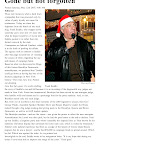

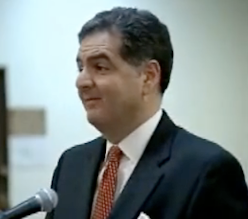
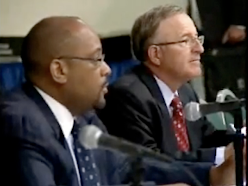
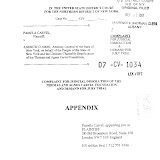

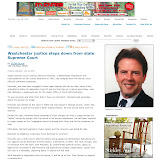
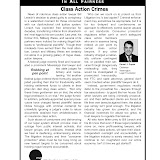

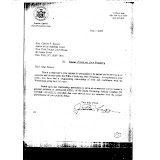
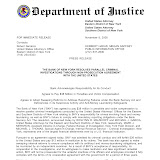
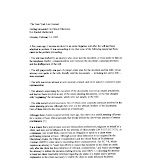
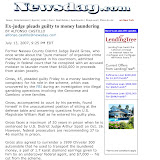
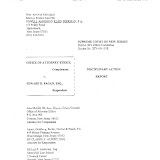
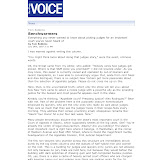
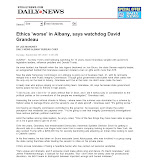
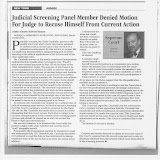



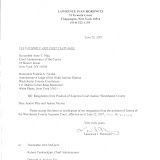
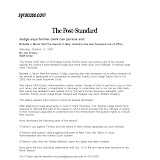
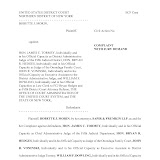

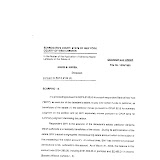
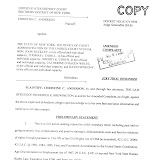
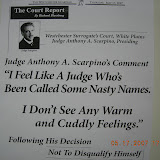
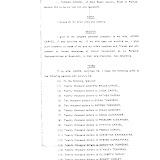
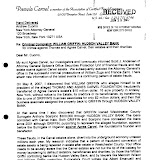
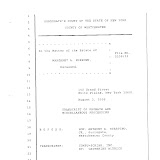
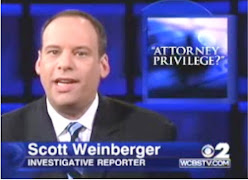
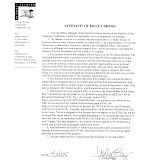

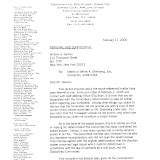
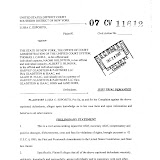
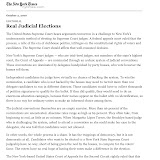
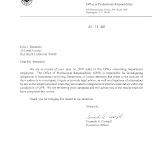
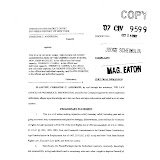
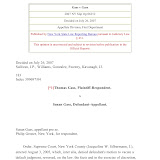
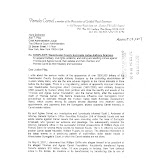

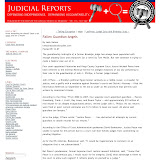
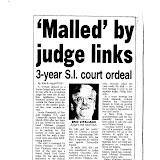
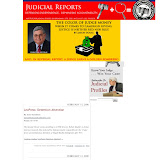
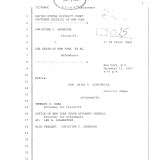
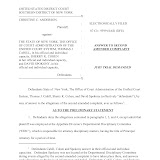
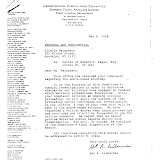
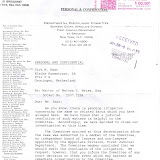
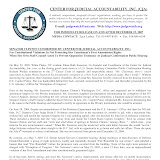


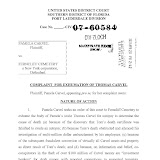
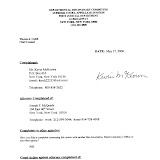
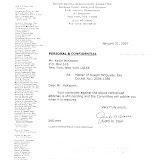
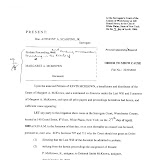
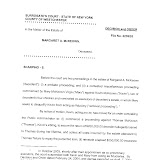
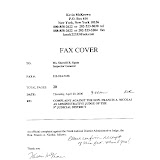

5 comments:
It has always been evident that Judy Kaye has serious issues, and now they appear to be defined as unresolved from her youth!
She doesn't like disagreements? Isn't that the core of the legal business....complainant versus defendant..arguments regarding the true facts of the law and all supporting past legal precedents...and it goes on and on!
Kaye speaks like an immature juvenile girl from middle school!
If she doesn't like arguments and one voice must speak...she should have remained, as an unemployed single person living alone! That is the world of work....KAYE!
Thank God you are leaving, but you must PAY for the damage you did to sooooo many people living in this state, to our judicial system and those that are allowed to run rampant in through the halls of same, because of you!
I believe that prison will afford you the life of NO arguments AND EVERYONE LIVING IN UNISON!
GOOD LUCK AND ENJOY!
Judge Kaye is but a symptom of the general muck and mire that the legasl profession has become. The bar has allowed this to happen. Everyone is afraid of offending the status quo judiciary and how it functions. Clients are no longer driven to lawyers who know the law. The clinet looks for the powerful and influential lawyers who know the judges.
Judge Kaye and her cronies saw the evil, heard the evil and did nothing to end it. I hope there is a God,because all of them will go directly to the inner circle of Hell.
Judy Kaye is the producer, director and actor in the corruption of the NY court system!
Kaye has appointed some of the most vicious and corrupt administrative judges, acting judges, and destructive and most evil politically appointed employees!
Just because Kaye is an old woman, doesn't mean she gets a free pass.
I have knowledge of her nasty deeds and she AND ANY OTHER FEMALE EMPLOYEES WHO PARTICIPATED IN this vile twisting of justice in NY, like any other MALE judicial employee, must take the consequences for their activity in the destruction!
Judy Kaye is not just a symptom of the corruption..she is the instigator!
the YENTE should go back to Sullivan Co. where she belongs
Post a Comment